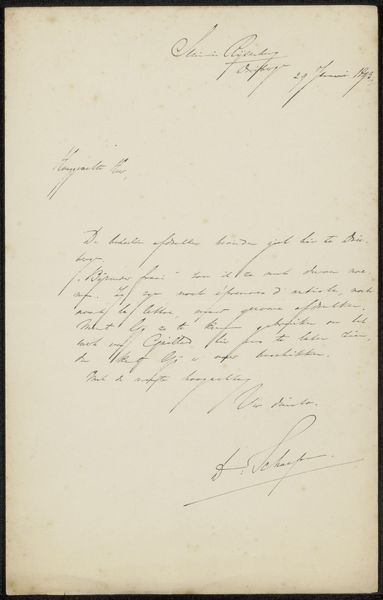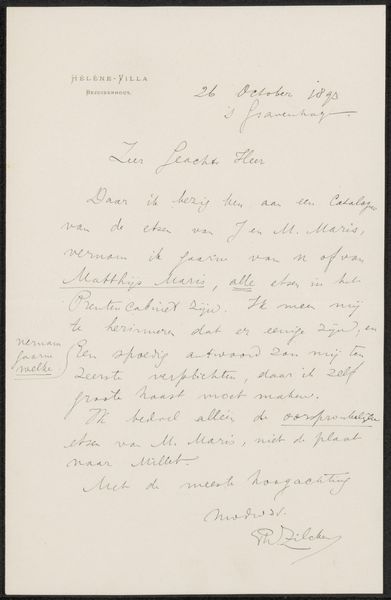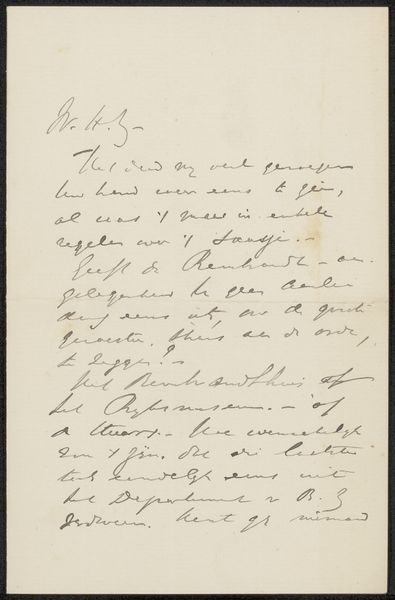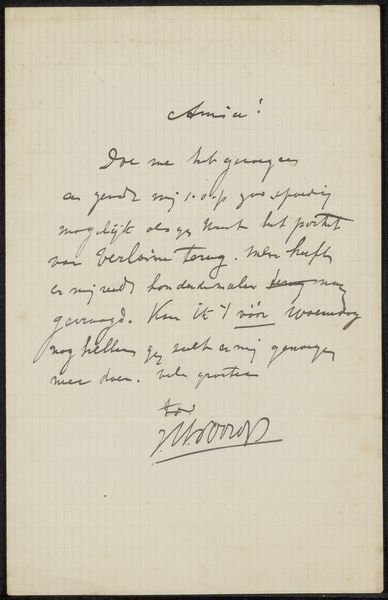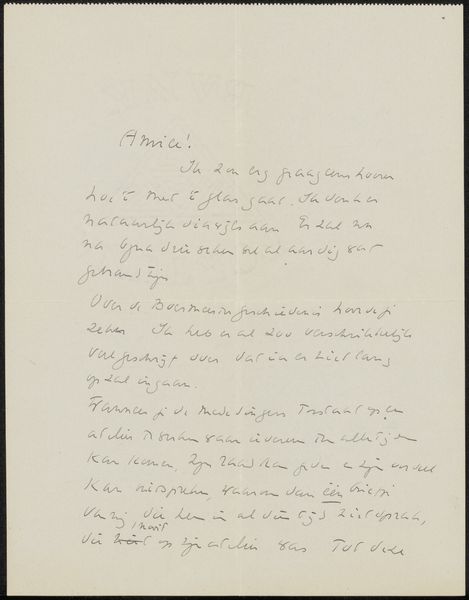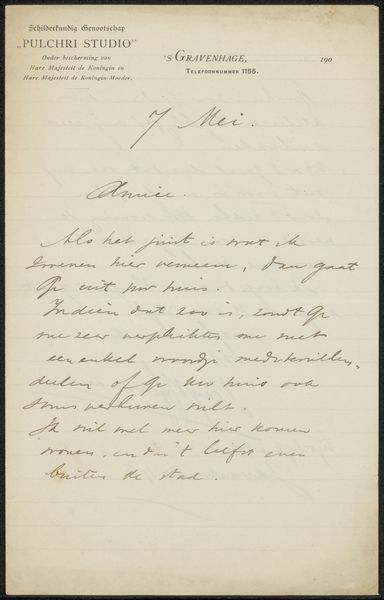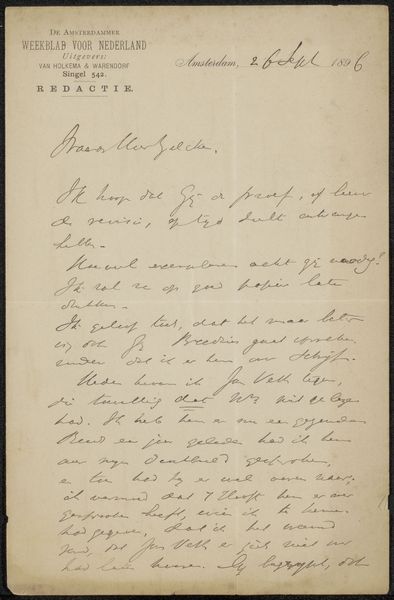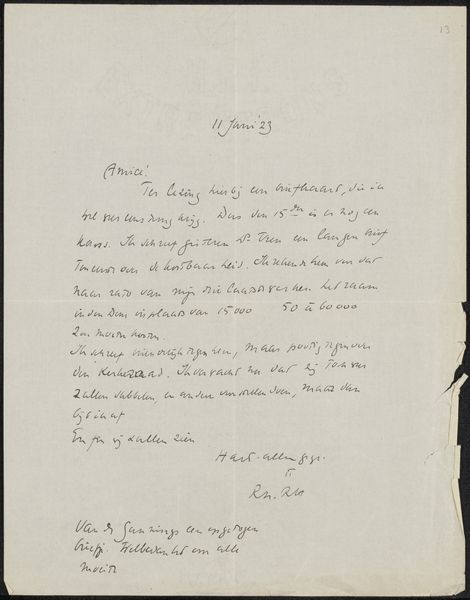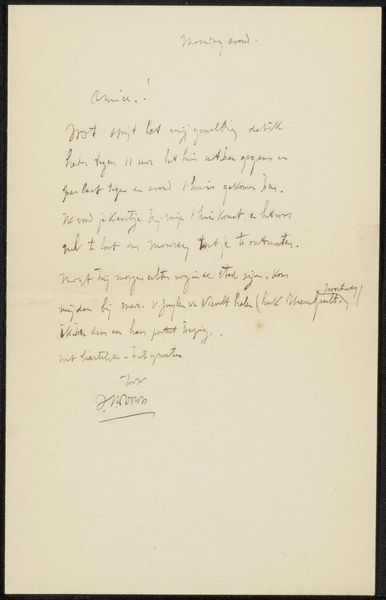
drawing, paper, ink
#
drawing
#
ink drawing
#
paper
#
personal sketchbook
#
ink
#
ink drawing experimentation
#
intimism
#
pen-ink sketch
#
sketchbook drawing
#
modernism
#
calligraphy
Copyright: Rijks Museum: Open Domain
Curator: "Brief aan Philip Zilcken," possibly from 1906, by Jules Coopman, is an ink drawing on paper. What do you make of it? Editor: Well, it's quite intimate, like a peek into a private correspondence. I'm struck by the handwriting, the way it dances across the page. It feels very personal. How do you interpret this work in relation to the social context of the time? Curator: I see this piece as an entry point to understanding the intricacies of interpersonal relationships in the early 20th century, specifically the societal norms around written communication and personal expression. What can Coopman’s choice to present a letter as art tell us about class and social status, both his own and that of the recipient? Editor: It’s almost like he’s elevating the everyday to art, resisting the separation between the personal and the public. The letter format also feels inherently performative in the act of creation. Curator: Exactly. Consider also that literacy itself was a form of power, especially for marginalized communities. Who had access to education and could partake in correspondence, and what did that signify? Editor: So, looking at this "Brief" in this way reframes a simple letter into a wider commentary on literacy, privilege, and even the gendering of correspondence. It prompts the questions "Who had a voice?" and "Whose stories were deemed worthy of preservation?". Curator: Indeed. It demonstrates that even the most unassuming image contains layers of meaning when approached with a critical, historical awareness. What was previously "just a letter" transforms into a valuable source of cultural insights. Editor: It definitely encourages a deeper look beyond the surface. Thanks; this piece has opened up my eyes to seeing art within intersectional narratives. Curator: And for me it underscores the continued relevance and resonance of personal narratives in understanding larger cultural conversations.
Comments
No comments
Be the first to comment and join the conversation on the ultimate creative platform.
